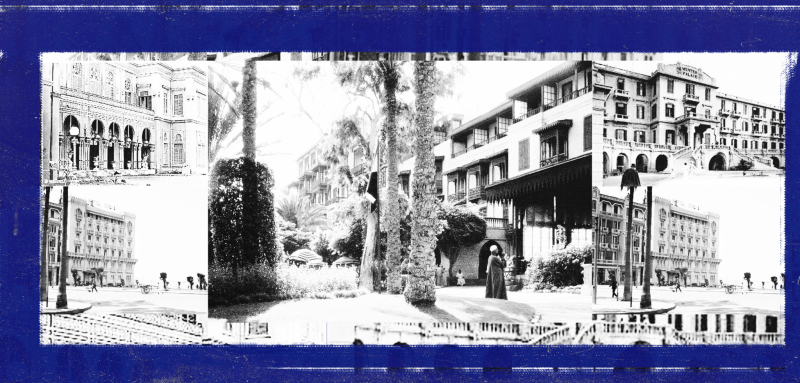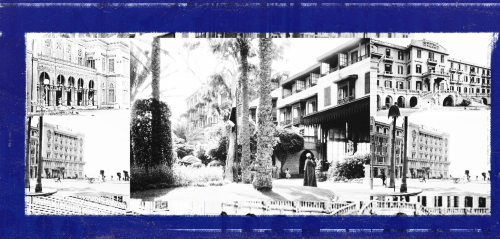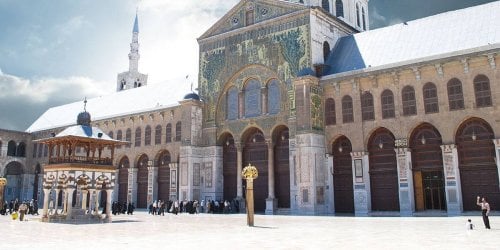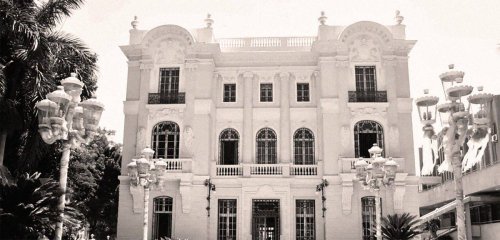On January 24, Ayman Soliman, executive director of the Sovereign Wealth Fund of Egypt, revealed that efforts are underway to attract investments for state-owned hotels “in the form of capital increases”, indicating that it has been met with “great interest” from several Gulf and foreign alliances to invest in them by up to 30%.
The news announced by the head of the fund, who acquired ownership of the assets that the state were managing on behalf of the Egyptian people, with its profits belonging to the public treasury, concerns hotels that are considered among Egypt’s heritage landmarks. This is a new step that confirms what Prime Minister Mostafa Madbouly announced in June 2022 that “a number of hotels will be merged in preparation to be listed on the stock exchange, in order to expand the governance of government institutions.”
According to the Asharq news site, quoting an Egyptian government official, the hotels that are planned to be put up for sale are distributed over several governorates, namely: Cairo Marriott Hotel (Saray Al-Jazeera), Mena House Haram Hotel, Cecil Hotel in Alexandria, and Winter Palace Luxor, along with three hotels in Aswan, Cataract, Movenpick, and Elephantine.
Let’s take a look at the most prominent events and highlights in the history of these hotels, some of which are more than 150 years old, a time that saw them witnessing many political and cultural events in contemporary Egyptian history.
Cairo's Marriott
In preparation for the inauguration of the Suez Canal, the ruler of Egypt, Khedive Ismail Pasha, took a number of measures, including the establishment of a palace on the west bank of the Nile of Cairo on the site of the current Zamalek neighborhood, resulting in the historic Gezirah Palace in 1869. The royal palace was erected at an incredible cost at that time, amounting to a staggering 750,000 Egyptian pounds, due to the luxury of its architecture and decorations that combine Arab and European styles, that were designed by German engineers Julius Frantz and Carl von Diebitsch.
Gezirah Palace was placed under guard and then nationalized during the reign of Abdel Nasser. Its name was then changed to Omar Khayam Hotel, and its management was later transferred during the Sadat era to the international company Marriott
Ismail wanted to impress his guests who were coming from all over the world to attend the opening ceremony of the canal, making the palace a place fit to receive kings and princes, most notably the French Empress Eugénie, who has long been rumored to have been loved by the Khedive. The palace itself also later witnessed the birth and marriage of his children.
However, a decade after the ceremony and due to the accumulation of Ismail's debts, the palace was sold to a private European company and turned into a hotel of the same name. It was sold in 1919 to one of the princes of Arabia, Habib Lotfallah, who turned it into a private residence, a year after the end of World War I, during which the British occupiers of Egypt at the time had turned it into a military hospital for their soldiers.
After the end of the royal era, the Gezirah Palace was among the list of properties that were placed under guard and then nationalized during the reign of Gamal Abdel Nasser. Its name was then changed to the Omar Khayam Hotel, and its management was later transferred during the Sadat era to the international company Marriott, although the ownership of its land and buildings remained with the Egyptian General Holding Company for Tourism and Hotels (EGOTH).
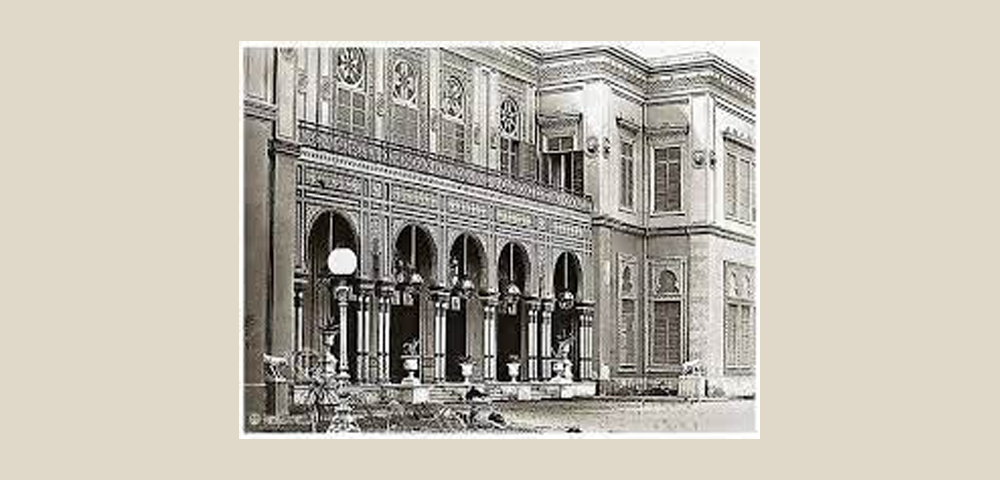
Marriott International built two modern-style towers next to the palace, occupying 35% of its area of 4,000 square meters, and its development work was carried out in 2019 at a cost of approximately 800 million Egyptian pounds.
Despite the modern appearances, the company stayed keen on making the best use of its historical character, advertising it to the public as a place "to enjoy the life of kings inside their palaces", and when it was celebrated a few years back for the passing of a century and a half since its establishment. A full decade before that (2009), it was added to the architectural heritage records of Cairo Governorate.
The Mena House of the Pyramids
This was also one of the palaces of Khedive Ismail, and he built it to be a resting place for him when he went on hunting trips in the desert of the pyramids. The palace was opened in the same year as the Gezirah Palace, but it was probably the best destination because it is close to the pyramids of Giza, "which made it a destination for adventurers and travelers since the era of Ismail," according to a master's thesis at Cairo University entitled "Hotel Architecture in Khedive Cairo."
Celebrities including Princess Diana, comedian Charlie Chaplin, American singer Frank Sinatra, and writer Agatha Christie came to Mena House, and it was a location for filming international and Egyptian pictures like "Valley of the Kings" and "His Majesty"
The resthouse was also used on the occasion that saw the inauguration of the canal, to host the visitors, kings, and princes who wished to visit the pyramids. But the fate of this resthouse was no different from that of the Gezirah Palace, as debts led to its sale to a British man in 1883, who turned it into a house and attributed it to the Pharaonic king Mena, so it came to be called the "Mena House". It was then sold again to another Englishman who turned it into a hotel that was opened in 1886.
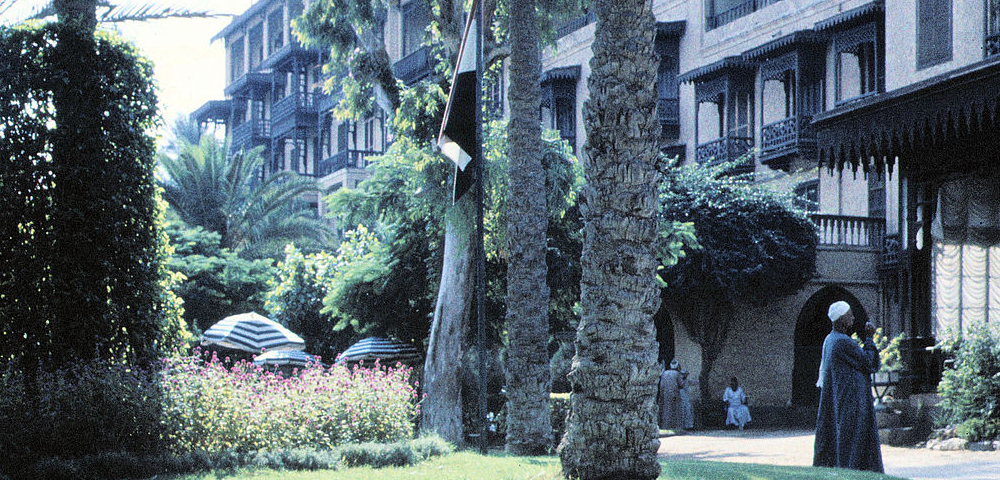
After decades of hosting Ismail's visitors, other celebrities and famous people came to Mena House, including Princess Diana, comedian Charlie Chaplin, American singer Frank Sinatra, and writer Agatha Christie. The hotel was also a location for filming international and Egyptian films such as "Valley of the Kings" directed by Robert Pirosh who hired the late Egyptian actress Samia Gamal to star in it, and "His Majesty” (1963) directed by Fatin Abdel Wahab and starring Farid Shawqi and Fouad el-Mohandes.
In addition to tourism and art, the hotel was the site of historical political events, where the leaders of the Allied camp in World War II, namely US President Theodore Roosevelt, British Prime Minister Winston Churchill, and Soviet leader Stalin, met in the mid-1940s to set the terms of the armistice and the of a policy lines new world order after World War II in what was known as the 1940 Cairo Conference.
Decades later, in 1977, it was the venue for peace talks between President Anwar Sadat, U.S. President Jimmy Carter and Israeli Prime Minister Menachem Begin in what became known as the Mena House Conference.
The hotel, which extends over an area of more than 29 feddans (egyptian unit of measurement), in addition to 37 feddans for golf courses, went through similar stations as that of the Marriott, according to historical documents. It turned into a camp and hospital during World War I, and then its ownership transferred to the Swiss company Nangovich, until it was nationalized in the sixties, and became owned by the company (EGOTH) in the seventies, which retained its ownership to this day, although its management was left under Marriott International.
The Cecil of Alexandria
The Steigenberger Cecil, a hotel with a prime location in Alexandria, located right in the heart of the “Bride of the Mediterranean”, was built in 1929 by Italian architect Giacomo Alessandro Loria, who designed other buildings in Egypt, including the Banco di Roma branch, the “Farah and Salem” building in the same governorate, and the Sassoon & Sons building in Heliopolis, Cairo.
The Cecil Hotel welcomed guests and Egyptian and international celebrities, such as Russian President Vladimir Putin, boxer Muhammad Ali Clay, singer Elvis Presley, writer Agatha Christie, and Egyptian writer Taha Hussein
The hotel, with an Italian-Florentine design, extends over an area of more than a thousand square meters. Its first owner was the wealthy German Albert Metzger, who chose its name after his son "Cecil".
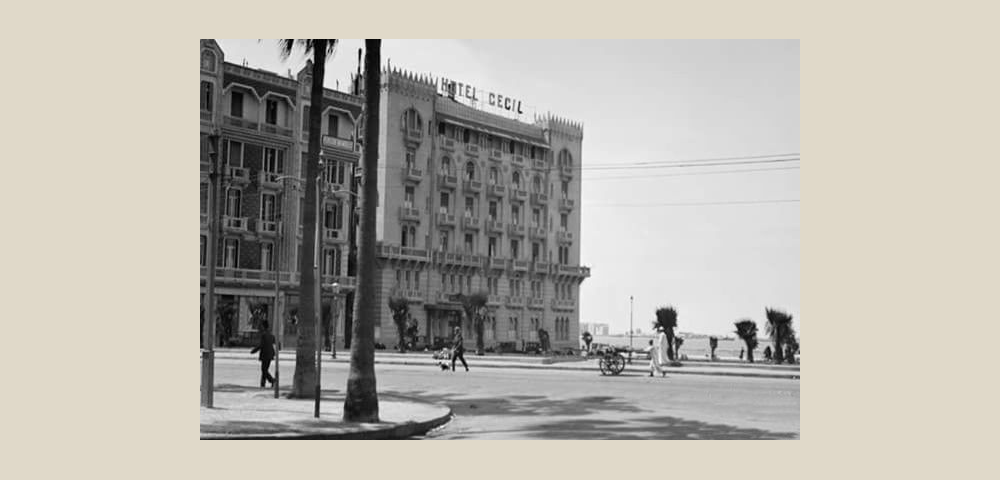
The Cecil Hotel welcomed guests and Egyptian and international celebrities, as documented in its records, such as Russian President Vladimir Putin, boxer Muhammad Ali Clay, singer Elvis Presley, writer Agatha Christie, and Egyptian writer Taha Hussein, with some of its rooms housing the names of well-renowned celebrities such as Farid al-Atrash and Umm Kulthum.
Similarly, the hotel was nationalized during the Nasser era, and repeated attempts by the descendants of its original owners to reclaim its ownership ended in losing the case in the eighties, until in 2007 they reached a final settlement with the Holding Company for Tourism and Hotels.
Now, EGOTH owns the entire land and buildings of the hotel, while its management is in the hands of the German company Steigenberger, and it is known as the Sofitel Cecil Alexandria Hotel.
The Winter Palace
The age of "Winter Palace" is not much less than the palaces of Khedive Ismail, as it was built 137 years ago, specifically in 1886, and its name (in Arabic "Al Qasr al Shatawi") indicates the purpose of its construction, which is to have a rest house for the ruling family in the winter. Upper Egypt, specifically Luxor Governorate, was chosen to build it close to the famous temple there and overlooking the Nile.
It was inaugurated in 1895, and a study indicates that its Victorian-style construction was carried out in 1903 with the participation of leading English businessman Thomas Cook, along with Charles Behler and George Nangovich.
Thanks to its privileged location, the Winter Palace hosted many guests, most notably British archaeologist and Egyptologist Howard Carter, whose name was associated with the discovery of Tutankhamun's tomb in 1922, and it was where he chose to announce the news of the major archaeological discovery. It also housed the Prime Minister of France, Georges Clemenceau, and King Albert I of Belgium, as it also became a frequent residence for King Farouk, who used to stay in the hotel in a private suite that still bears the name the “Royal Suite".
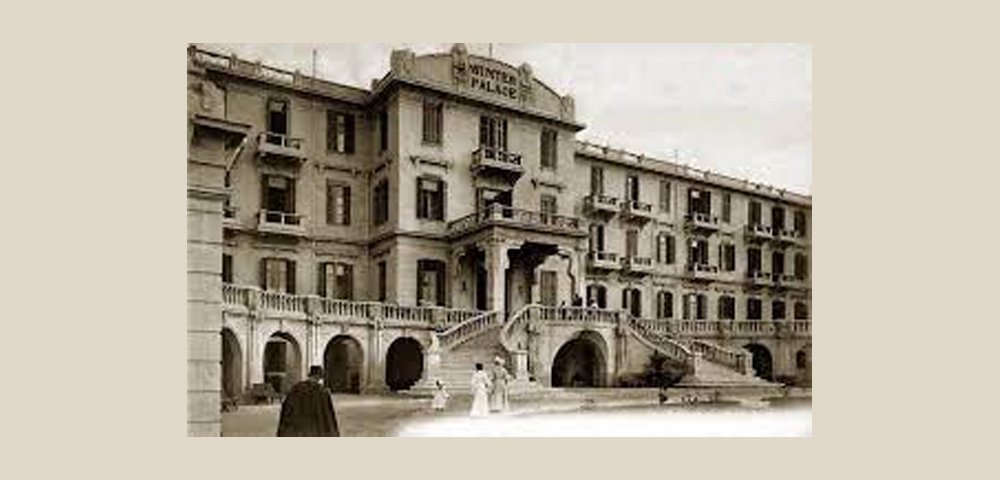
A pavilion extension was added in 1996 and was put into operation in 1997. It is now managed by the French company Accor, but it is fully owned by Egypt's EGOTH, which, like it did with Mena House, negotiated in 2020 with several banks to obtain a loan of 400 million Egyptian pounds for the development of the Winter Palace. Its historical value was confirmed by a decision to register it issued by the Supreme Council of Antiquities (SCA) under No. 1334 of 2010.
Cataract Hotel is characterized by a mix of Victorian and Oriental design, and is surrounded by gardens and landscapes of the Nile, including the waterfall from which it derives its name "Cataract", and monuments such as the Tomb of Aga Khan
Aswan’s Cataract and Movenpick
To the south of Luxor, in another governorate rich in historical monuments, Aswan, is the Cataract Hotel. Situated on one of the rocks overlooking the Nile, its construction dates back to 1899. Another hotel, the New Cataract, was attached to it about half a century later, specifically in 1963, making the entire complex extend over an area of 38 thousand and 615 square meters.
The hotel is characterized by a mix of an English-Victorian and Oriental design, and is surrounded by gardens and landscapes of the Nile, including the waterfall from which it derives its name "Cataract", and monuments such as the Tomb of Aga Khan. It is also distinguished by its preservation of a library that includes literary works by international writers who documented the history of Egypt.
As for what was documented by press reports about the hotel, especially after its renovation, which lasted from 2008 to 2011, it revolved around stories from the days of World War II and how the hotel became a destination for English soldiers. Reports also included how the advertisements for the hotel looked like in 1946 after the end of the war, and how it was under Swiss management, while its staff were Greek, Italian, and Nubian Egyptians.
The hotel, where Khedive Abbas Helmy attended the opening of its restaurant in 1902, was a destination for celebrities such as novelist Agatha Christie, US President Jimmy Carter, and British Prime Minister Margaret Thatcher. It is now owned by Egypt's EGOTH company, while France's Accor company manages it.
As for Mövenpick, it is a relatively modern hotel compared to the other five hotels, because it was built in 1975 on Elephantine Island in the heart of the Nile within Aswan Governorate, 500 meters from the El Nabatat Island, 1.5 kilometers from the Nubian Museum, and almost the same distance from the tomb of Aga Khan.
The hotel belongs to the international Mövenpick brand launched by the Swiss hotel owner, Ueli Prager, in 1948. It was dedicated to restaurants before going into the hotel business in the seventies as well, to spread its buildings in multiple countries, as it has more than one branch in Egypt.
The hotel, owned by EGOTH and managed by the Accor company, has not been spared the crises facing various economic sectors. In 2012, it witnessed a sit-in by its workers to demand "a minimum wage, salary increases, and demands for incentives". Then the government reopened it in 2016 after developing it at a cost of 220 million Egyptian pounds.
Raseef22 is a not for profit entity. Our focus is on quality journalism. Every contribution to the NasRaseef membership goes directly towards journalism production. We stand independent, not accepting corporate sponsorships, sponsored content or political funding.
Support our mission to keep Raseef22 available to all readers by clicking here!
Interested in writing with us? Check our pitch process here!
